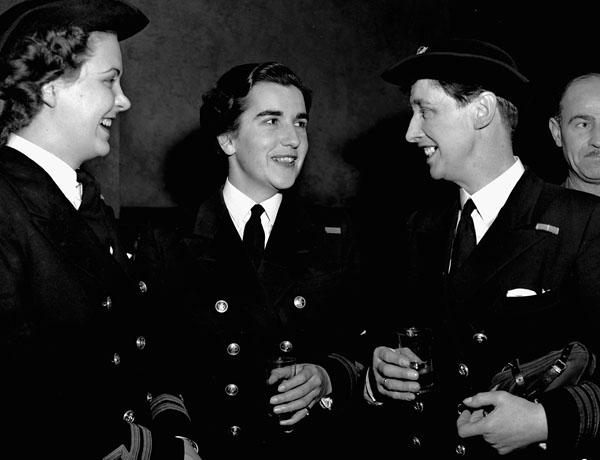Watch: When WWII intensified, it became apparent to Canada and its allies that more help would be needed and that help came from women. Jacques Bourbeau meets with some of the women who changed the face of the military and eventually the workforce.

OTTAWA – A group of women who played a crucial role during the The Battle of the Atlantic are finally being recognized for their wartime efforts.
The Battle of the Atlantic was the longest running battle of the Second World War.
While allied convoys faced off against German U-Boats on the seas of the North Atlantic and casualties mounted, Canada’s Navy needed all hands on deck.
It couldn’t afford to have sailors doing work on shore. So, the solution was to start recruiting women.
“They needed manpower. They needed bodies and it didn’t really matter which sex they were if they could do the job,” said Frances Tippett, the youngest female recruit to the Navy in World War Two
The 7,000 women who joined up were called Wrens, a loose acronym for the Women’s Royal Canadian Naval Service.
“When the war started my Dad said to me: ‘what do you want to do with your life?’ and I said, ‘I really want to go to university.’
He said, ‘I don’t think so. I think you should do something for your country,’” said former Wren Mary Sinclair.
They filled many roles as clerks, drivers, signalers, wireless operators.
It was a learning experience for both the women and their male colleagues.
“Men were for the first time working beside women in a way they had never done before,” Tippett said.
The Navy was the last service to recruit women, but it learned their value quickly.
“It didn’t take long for the brass to realize, ‘geez these women are good,” said 92-year-old Elsa Lessard.
Following in her older brother’s footsteps, Lessard joined up with the Navy as soon as they came knocking.
She spent most of the war in a farmer’s field in New Brunswick copying down Morse Code transmissions from German U-Boats, helping Allied warships hunt them down.
“What I spent the war at was spying on the Germans,” she said. “You’d slam a button by your receiver and the gal in the shack a kilometer away would yell the frequency in, which means you have a U-boat.”
Extended interview: Elsa Lessard
The war years were formative for these women. They learned new skills and formed close bonds as they served their country.
But when the war ended, they weren’t prepared to go back to the roles society expected them to take.
“They couldn’t put us back in the kitchen,” Lessard said. “If the war hadn’t come along, you know what we had open to us? Teachers, nurses and secretaries.”
Instead, Lessard used her war training to start a career as an electronic technician – another field dominated by men during that time.
She later spent time in the government and private sector, and became a purchasing agent for electronics.
“It changed my life,” Lessard said.
After the war, the Wrens were disbanded and some say their contributions forgotten.
“Then the world forgot us, both the men and the women, but it never gave the women much thought anyways,” Lessard said.
She recalls buying a Canadian book recounting the history of the Navy, but was disappointed to find it had one major oversight.
“When we got home we found not one bloody word about the Wrens,” she said. “We were livid.”
But there are signs that is changing. At a gala marking the Battle of the Atlantic, in Ottawa on Thursday, 11 Wrens were recognized for their service.
“They didn’t serve at sea, but they were crucial enablers for those who were at sea,” said Vice-Admiral Mark Norman.
It’s a message Lessard hopes every Canadian hears.
“Nobody knew who a Wren was, so part of me says, ‘Damn it they’re going to find out who a Wren was.’”
And at the age of 92, her mission is still going strong.
Watch more of Elsa Lessard’s story:
Gallery:













Comments